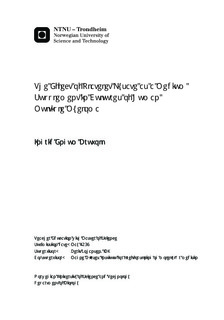The Effect of Platelet Lysate as a Medium Supplement in Cultures of Human Multiple Myeloma
Master thesis
Permanent lenke
http://hdl.handle.net/11250/2351477Utgivelsesdato
2014Metadata
Vis full innførselSamlinger
- Institutt for biologi [2512]
Sammendrag
Multiple myeloma (MM) is a cancer of antibody-producing plasma cells in the bone marrow. It is the second most frequent hematological malignancy and comprises 1 % of all cancer. Most human myeloma cell lines (hMCLs) derived from MM patients are cultured in animal serum. However, the hMCLs KJON, OH-2 and IH-1 established at the Department of Cancer Research and Molecular Medicine in Trondheim are cultured in a growth medium supplemented with human serum (HS), since it has been impossible to keep them alive for extended periods in animal serum. HS is provided by the blood bank at St. Olavs University Hospital in Trondheim, but the access is intermittently poor and the use of HS is otherwise economically and ethically unfavorable. The aim of this thesis was to study the effect of platelet lysate (PL) as an alternative medium supplement to HS in cultures with the MM cell lines KJON, OH-2 and IH-1. Platelet lysate is known to contain large amount of various growth factors and has been shown to be effective in stimulating proliferation of other cell types.
Flow cytometry and CellTiter-Glo assay were performed to study apoptosis and proliferation respectively in various conditions with PL and HS. Long-term cultivation of cells was performed to test the proliferative effect of PL over time. Long-term cultivation showed that IH-1 cells could utilize PL as a medium supplement to some extent, but proliferation was too slow to consider PL as a good alternative to HS. OH-2 cells did not proliferate in PL over extended periods of time, and the cells seem to be impossible to wean from their dependence on HS. KJON cells had a slower proliferation rate in PL compared to HS. Apoptosis assay showed in general small differences in the percentage of viability among the cells cultured in HS and PL, while proliferation assay revealed that HS is more effective in stimulating proliferation of the cells of the respective cell lines.
If HS is to be replaced by an alternative medium supplement, this type of medium should give a stable and high proliferative effect on the cells and support growth and survival at the same extent as HS. PL cannot substitute HS because it does not contribute to optimal growth and proliferation of the cell lines IH-1, KJON and OH-2. The processing of PL was also time-consuming and less practical than for HS.
